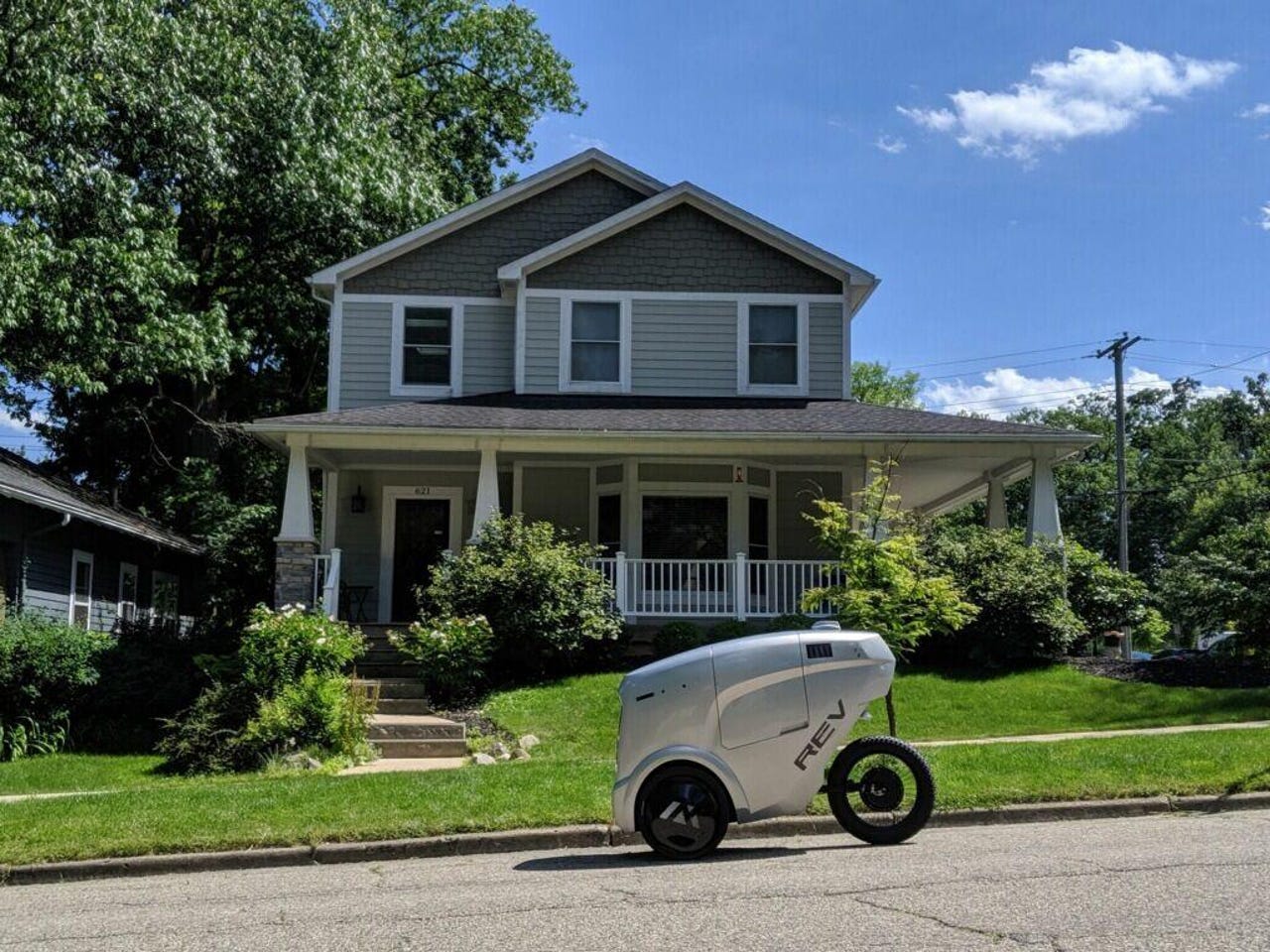New delivery robot wants to share the bike lane


A new last-mile delivery robot will be taking to streets soon. It will also be taking to bike lanes, if its creators have their way.
Refraction AI, creator of a low-cost, lightweight delivery robot named REV-1, built its bot to operate in both the bike lane and on the shoulder of roads. The company, which recently came out of stealth, is the brainchild of two University of Michigan professors, Matthew Johnson-Roberson and Ram Vasudevan, who say they've developed a safer, more cost-effective solution for last mile logistics than anything in the current delivery paradigm.
Read this
"We have created the Goldilocks of autonomous vehicles in terms of size and shape," explains Matthew Johnson-Roberson, cofounder and CEO at Refraction. "Our platform is lightweight, nimble and fast enough to operate in the bike lane and on the roadway, and we are tackling regional inclement weather patterns that inhibit or slow down other AV solutions."
If the thought of sharing the bike lane with a robot doesn't sit well with you, you're not alone. But the creators, cyclists themselves, see a gold mine in being able to connect local businesses with customers using lightweight robots that are speedy enough to ensure prompt delivery but slow enough to avoid technical and safety challenges faced by most autonomous road vehicles.
Bike lane robots would be able to delivery much faster than robots that share the sidewalk with pedestrians, and they're much cheaper to build than autonomous delivery vans. Using off-the-shelf sensors, a fiberglass frame, and electric bike components, the three-wheeled REV-1 has a build price tag of under $5000.
While many last-mile delivery robots look like rolling breadmakers, REV-1 stands 5 feet tall, 4.5 feet long, and 30 inches wide, about the dimensions of a cyclist. It weighs approximately 100 pounds and can reach a speed of up to 15 mph, which is fast enough to be nimble and deliver in a timely manner. But, the creators are quick to point, it's slow enough to ensure a very short stopping distance. That makes the robot more versatile than many road-going competitors.
"Our vehicle's low curb weight at low speeds makes deployment safer than other autonomous vehicles. For example, we have a 5 foot stopping distance, compared to the typical 45 foot stopping distance that a full-sized vehicle at the same speed would need to avoid an accident," continued Johnson-Roberson. "Finally, our design and technical choices, particularly relying on cameras over HD-LIDAR, allow us to operate a more economical platform that gives us a significant competitive advantage on cost efficiency."
The primary sensor system is camera-based, which accounts for the significant cost-savings over LiDAR-based sensor suites. The robot also utilizes radar and ultrasound sensors for added safety.
"Consumers today expect on-demand goods of every type, and timeliness of delivery is often the key to customer satisfaction. But companies are struggling to find consistent, reliable, and economical ways to address that need," said Bob Stefanski, Managing Director of eLab Ventures, a Refraction backer. "Refraction's use of sturdy, smaller-sized delivery robots in the bike lane allows for faster technology development and covers a larger service area than competitors operating on the sidewalk. Their vehicles are also light-weight enough to deploy more safely than a self-driving car or large robot. The market is huge, especially in densely populated areas."
Whether Refraction, an 11-person startup, can convince bicyclists to share the bike lane is another story. Many urban cyclists are already feeling the squeeze from Bird's expansion.